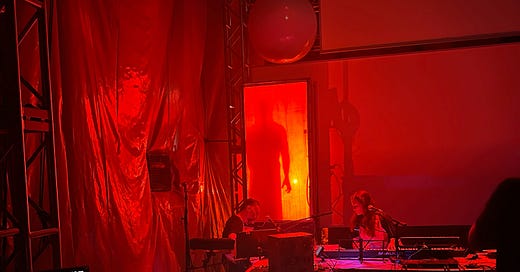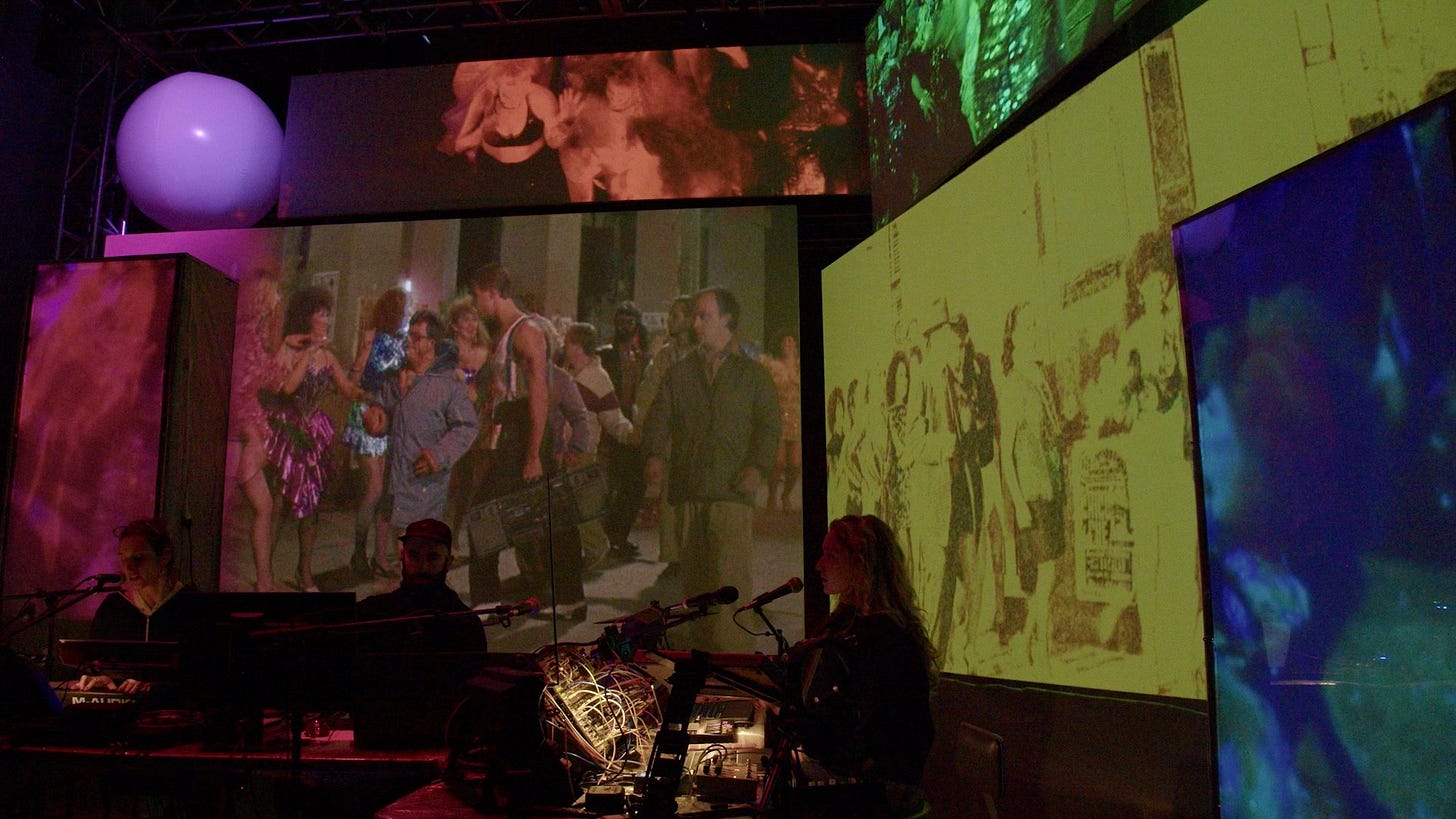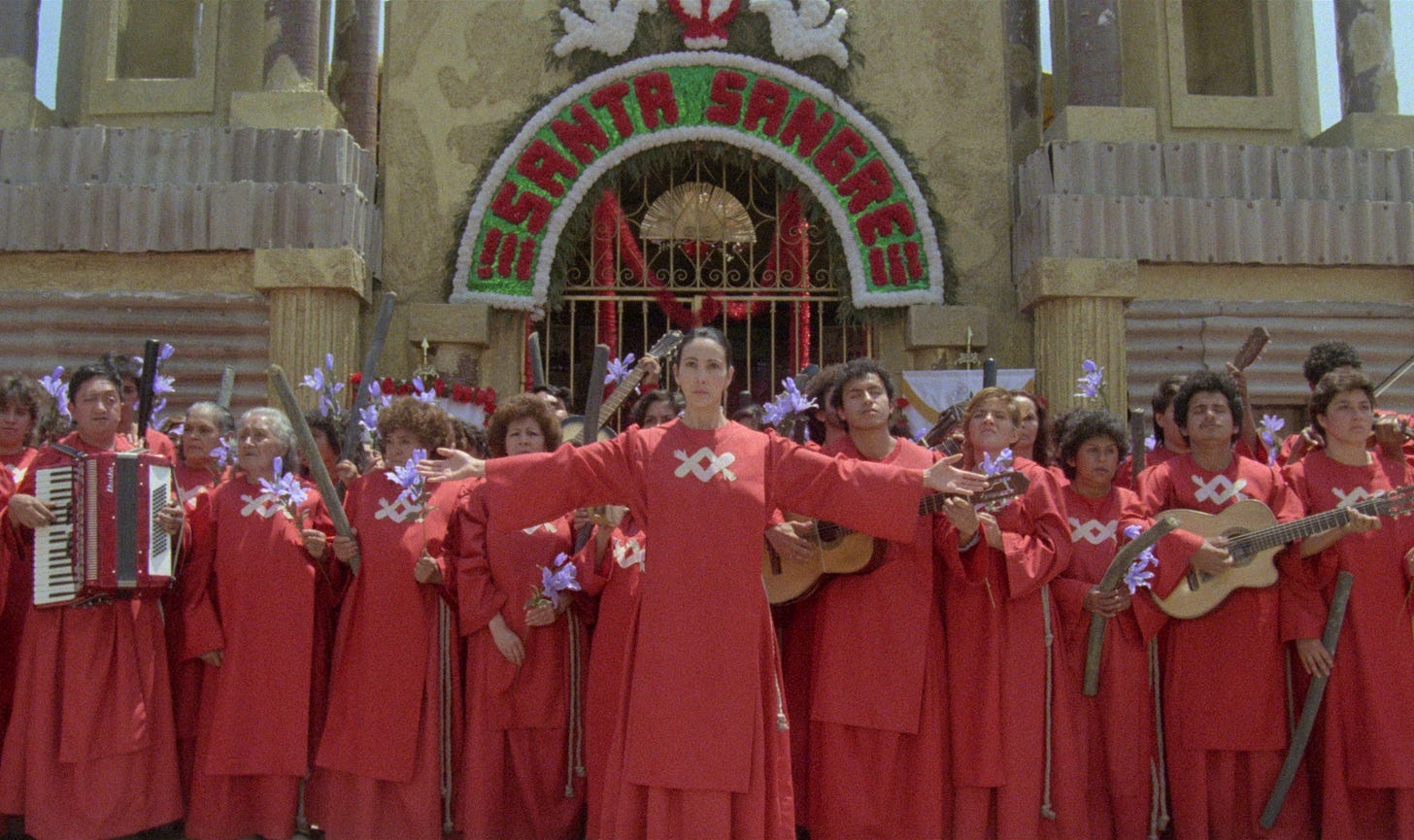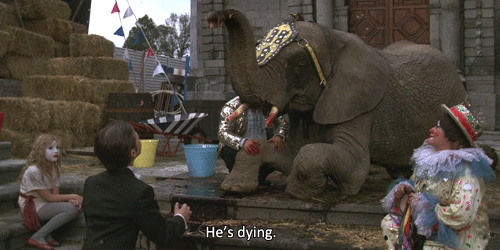Blood, Madness, and More Blood: Theater MITU Dissects An Obsession
The experimental troupe is sticking around in Gowanus — after a quick trip to the Moon
Alejandro Jodorowsky’s disturbing psychological thriller Santa Sangre would not seem a typical candidate for theatrical adaptation. But then, experimental theater troupe Theater MITU is hardly known for their typical choices of subject matter.
A surrealist journey through the mind of a serial killer, cult classic film Santa Sangre – in English, Holy Blood – finds an unsettling kind of empathy for its brutal protagonist, tracing the roots of his violent nature to an almost mythical childhood trauma.
holy (Blood), now at MITU580 through May 25, is not an adaptation of Jodorowsky’s film per se. Like most Theater MITU creations, the show is hard to summarize. (The company’s past projects include remnant, an audio-based rumination on war, and Victor L. Cazares’ time-bending American (Tele)Visions.) It could best be described as a meditation on the film’s themes of madness, forgiveness and the long shadow of childhood wounds.
The company is also interrogating their own strange obsession with Jodorowsky’s movie, which unleashes a stream of gruesome images while finding an unsettling empathy for Fenix — despite his misdeeds.
“Santa Sangre has haunted us, as a company, for a long time,” explained Rubén Polendo, the company’s Founding Artistic Director. The MITU ensemble first watched the film together about 15 years ago, and its stunning, majestic imagery has stayed with them.
“We realized that our ‘obsession’ was actually with these images,” said Polendo. “These incredible, almost tarot card-like theatrical images that [Jodorowsky] put on film.”
The film opens on Fenix as a young boy, performing in a traveling circus alongside his mother Concha, a trapeze artist and aerialist, and Orgo, his abusive father.
Early in the film, the circus’ elephant grows deathly ill. In one of Jodorowsky’s most arresting images, the circus crew – a dwarf and two clowns among them – gather around the sick animal and watch in horror as blood gushes from its trunk.
“I often think of that damn elephant,” confessed Polendo. “It is a mythological thing to see this huge, invincible beast dying at the feet of this child. It feels like a part of [Fenix] begins to die at that moment.”
Later that night, Concha witnesses Orgo sleeping with the circus’ resident “Tattooed Woman.” A series of horrific events follow: Concha throws acid onto her husband’s genitals; in retaliation, Orgo chops off both of his wife’s arms; and finally, Orgo staggers into the street and, in front of Fenix, slits his own throat.
Through the end of this sequence, holy (Blood) is akin to a live-scored film screening. The film is projected onto a curtain while the company, visible only as outlines, performs live music behind the screen.
When the film jumps forwards to Fenix’s adult life, the screen drops to reveal the full company.
From here, we enter Fenix’s mindscape. His chaotic psyche is represented through a cacophony of artistic forms: electronic music, narration, lyricism and poetic reflection. The film continues to play, on multiple screens surrounding the performers, but the company is now intimately involved in its telling.
And whenever Fenix takes a life, performers appear inside two glass boxes and unleash torrents of blood.
“We continue to travel through a much more fractured version of the story, but now you’re almost inside the storm of his brain,” said Polendo. “And the performers become like a Greek chorus guiding you through an ancient tale.”
In the film, Fenix’s victims – all of them women – are flimsy caricatures, given little voice. From the beginning of their work on holy (Blood), the MITU team knew they wanted to offer a corrective to Jodorowsky’s disinterest in these victims’ personhood.
Performer Kayla Asbell sings on their behalf in one scene, a graveyard dream sequence in which Fenix’s victims rise out of the ground and surround him. She insists in song: “You cannot escape/The wreckage of your choices.”
“It gives them a voice in a haunting way,” said Polendo. “The power of their voices is what ultimately collapses him.”
(holy) Blood is performed at MITU580 in Gowanus, the company’s permanent home since 2018. Theater MITU has just signed a new lease to remain in the Gowanus space for 10 more years.
In between presenting their own works, the company rents out the flexible, multi-use space to other interdisciplinary troupes. Pulitzer Prize finalist Circle Jerk was live streamed from MITU580 in 2020, while the madcap celebration of mall culture 1-800-3592-113592, from new ensemble CHILD, played there in March of this year.
Each new work is a reinvention for the company. Theater MITU’s last show at MITU580 was the hopeful, dreamlike Utopian Hotline, a communal imagining of a better future for humanity. That gentle piece transformed the space into a welcoming living room, complete with bean bags and pink carpeting.
Utopian Hotline is now on a worldwide tour, with recent stops in Bahrain and Arizona. Future stops in Utah and Texas are planned, along with a Boston engagement performed inside a planetarium.
The company was also recently selected, as part of Arizona State University’s Interplanetary Initiative, to have their work attached to a lunar probe leaving Earth this November. The full Utopian Hotline performance archive will be placed onto a tiny disc – similar to the “Golden Record” included aboard two Voyager spacecraft in 1977 – and sent on a journey into space.
“So, one of our next tour stops is the Moon,” laughed Polendo.
If a common theme unites Theater MITU’s disparate works, it is perhaps a reckoning with legacies of violence which still allows space to imagine a better future.
“Fenix finds a kind of freedom – not from the horror he caused, but from the trauma of it,” said Polendo. “We can travel through this darkness.”









